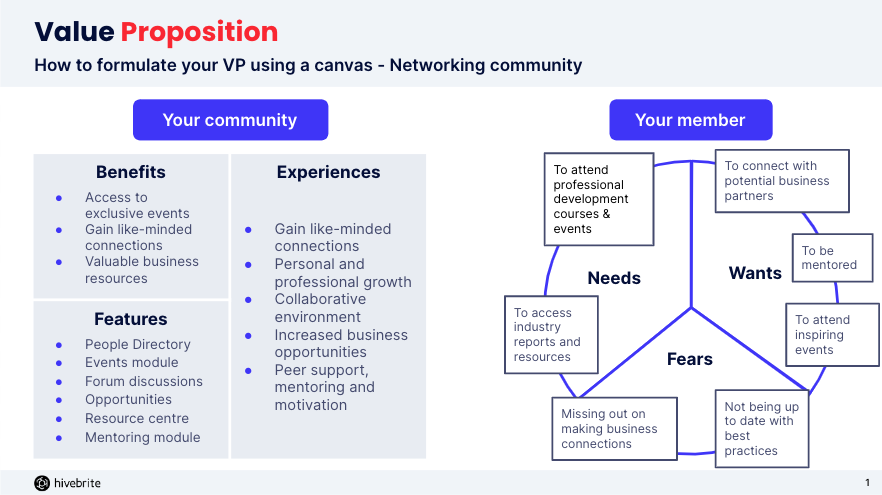Product
Learn more about the all-in-one, most powerful solution for community engagement

Gone are the days of lifelong employment with the same company. The U.S. Bureau of Labor Statistics reports that millennials have held an average of nine jobs between the ages of 18 and 36. While career mobility offers many benefits, it can also make it harder to build lasting professional relationships. That’s where an online alumni network comes in.
Whether you’re re-engaging former employees or supporting graduates, learning how to build a strong community is essential. When thoughtfully structured and actively managed, an alumni network strengthens member connections while advancing your organization’s long-term goals.
Whether tied to a college or a company, alumni communities function as powerful social networks built on shared experiences, values, and goals. When intentionally designed, these online alumni networks can provide lasting value to both their members and hosting organizations.
According to Boston University, alumni networks “represent some of the most valuable relationship assets we as professionals can access.” A strong alumni online community can provide graduates with tools for career growth and personal development through:
Additionally, Forbes notes that alumni networks can help level the playing field by giving underserved graduates access to career connections that more privileged students often gain through family and personal networks.
Corporate alumni networks offer many of the same benefits as college networks, while also advancing business outcomes. They can:
Like any online community, building a strong alumni network requires thoughtful planning and dedicated resources (like a skilled community manager!) While the outcomes may differ for collegiate and corporate communities, we’ll find a number of similarities in how they are set up and managed. Ready to learn how to build an alumni network that lasts? Let’s get started.
Don’t forget, communities are for people! Before defining your organization’s goals, focus on understanding what your alumni truly need. Are they looking to expand their professional network? Do they want access to career development, mentorship, or events? The Fulbright Program, for example, knew that their global alumni of former grantees needed a centralized hub to connect, share research, and collaborate on projects and ideas.
This discovery phase is also a great opportunity to engage potential members early on. Send out a survey or conduct 1:1 interviews with your ideal members. Use these insights to shape your approach and build a strong case for your alumni network. (Check out our community value proposition canvas to get started.)

Once you’ve identified a clear need for your online alumni community, the next step is to define what success looks like—both for your members and your organization.
Start by asking: How will this community help alumni achieve their goals? Will it focus on 1:1 networking, mentorship programs, career development, or exclusive events? These outcomes should align with the needs you discovered during your research.
Next, connect your community’s purpose to your broader organizational objectives. Are you building an alumni network to increase brand awareness, generate new leads, improve recruitment through referrals, or strengthen long-term engagement? Be as specific as possible when defining your success metrics. Clear, measurable goals will help you track progress and demonstrate the impact of your community over time.
The tools you use to support your online alumni community should align with your goals and the needs of your members. When evaluating community platforms, ask yourself:
For example, the Shell Alumni Network identified early on that their members needed sub-groups to connect with like-minded peers. That feature became essential in fostering meaningful relationships within their network.
A strong engagement strategy is essential to the success of any online alumni community. How you engage your members should be driven by their interests, needs, and goals. Our recommendation? Start small, stay consistent, and experiment often.
Not every tactic will work, but by testing different approaches and tracking results, you’ll discover what truly resonates with your members. And remember to give your tactics a chance—sometimes the first attempt doesn’t work, but members may catch on if you try again.
Notre Dame University’s alumni association transformed its event management capabilities with Hivebrite, allowing organizers to independently configure sophisticated multi-day, multi-track events with customized ticket options, while implementing precise controls over availability based on eligibility, timing, and capacity requirements. Events are a big way that Notre Dame keeps their alumni engaged. This flexibility proved invaluable during COVID-19, enabling a swift transition to virtual programming that now seamlessly complements their in-person gatherings.
Here are a few ideas to kick off your community engagement efforts:
In addition to events and interactive features, engaging content plays a key role in building alumni networks that feel vibrant and valuable. Focus on what your members genuinely want to read, watch, or listen to vs. what’s easiest to create.
Content for alumni networks could include:
The key is to deliver content and experiences that reflect your network’s values and help your members grow, both professionally and personally. Read more about the evolving landscape of alumni engagement.
Once you’ve defined clear goals for your online alumni network, the next step is measuring progress and impact. Strong analytics help your community manager evaluate what’s working, improve engagement strategies, and demonstrate the community’s overall ROI.
Community analytics can include both quantitative and qualitative data, such as participation rates, content engagement, and success stories or testimonials. Take time to identify which metrics align most closely with your goals and focus on tracking those consistently.
While there are countless KPIs you could measure, the key is to choose the right analytics that reflect your community’s purpose and avoid getting bogged down in unnecessary data.
Here are a few alumni network analytics to consider:
Whether you’re launching a new online alumni community or growing an existing one, the right platform can make all the difference. From advanced profile and member directory functionalities to purpose-built engagement tools, Hivebrite is designed to help you build, grow, and sustain a thriving alumni network.
Contact our team today to see how we can support your alumni community goals.